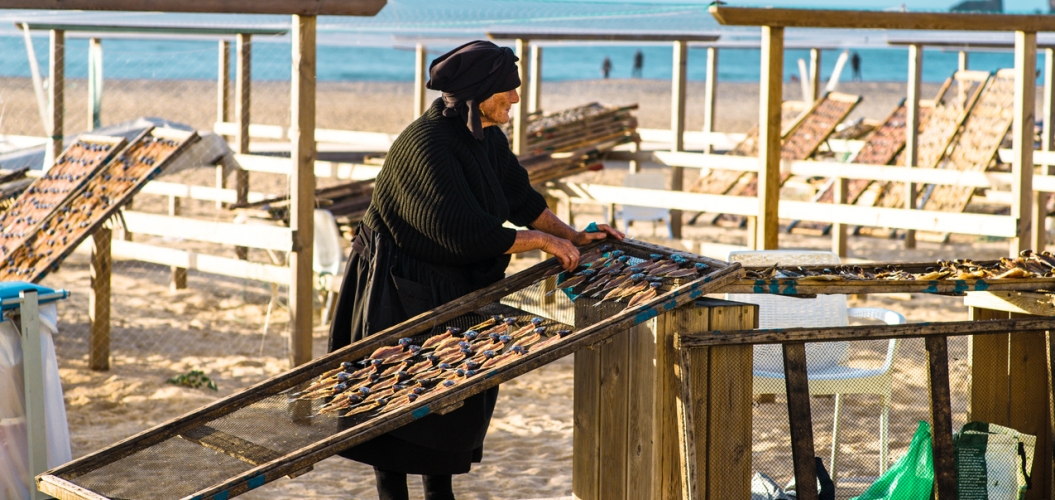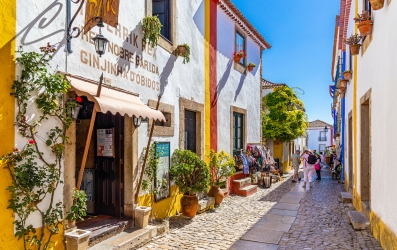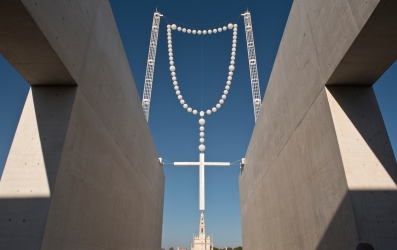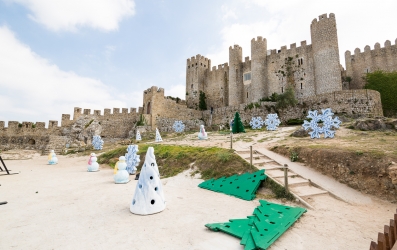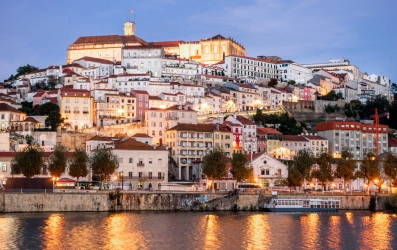Nazaré is a traditional fisher village. Discover the traditions of this village, considered one of the most attractive Portuguese destinations!
Nowadays, the village of Nazaré is one of the most attractive destinations in Portugal. It is located remarkably close to the Capital, Lisbon, but here it seems that time has stopped. This small village known worldwide for its waves, is also irresistible for remaining faithful to the purest tradition.
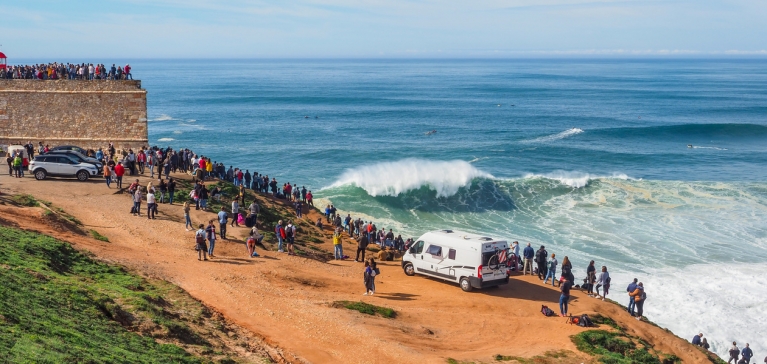
Nazaré is a popular surf route in Europe
Discover the main traditions of this village and the people harmoniously linked to the risky life at the sea. From the fishermen, to the seven petticoats and narrow streets, find out why Nazaré is so special.
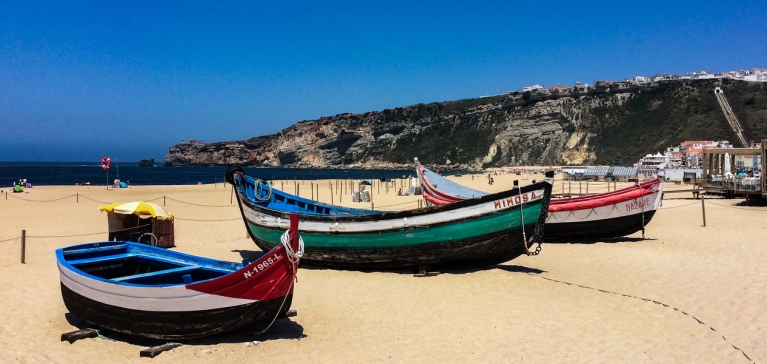
The essence of the fisher village
Discovering a typical village in Portugal...
Today, the quiet village of Nazaré is considered a must-see destination for surf lovers. In fact, its wild waves enchant the fearless surfers who come from all over the world to challenge these waters.
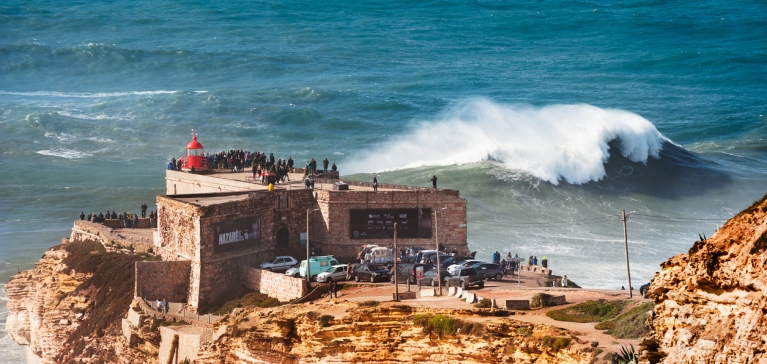
In this place appear the biggest waves in the world
However, Nazaré doesn’t only mean surf. Nazaré is synonymous with tradition. And even with the tourist crowds which come to this village since the early of the 20th century changed it. Being a small fishing village, Nazaré keeps alive one of the most genuine Portuguese traditions.
In fact, its people have always been intricately linked to the sea. They don’t usually surf the huge waves of the great canyon, but they must face the risky sea. Nowadays, tourism is the main economic activity of this village, but years ago, the main activity was fishing. And for some families, it remains the central source of livelihood.
And so, every morning around 06:00 am, the village wakes up and every man goes to the sea. In winter it is still night but, courageous, they launch the small boats to the cold waters and sail…and when they come back from the sea, they have the days freshly fished. This is, certainly, a risky job.
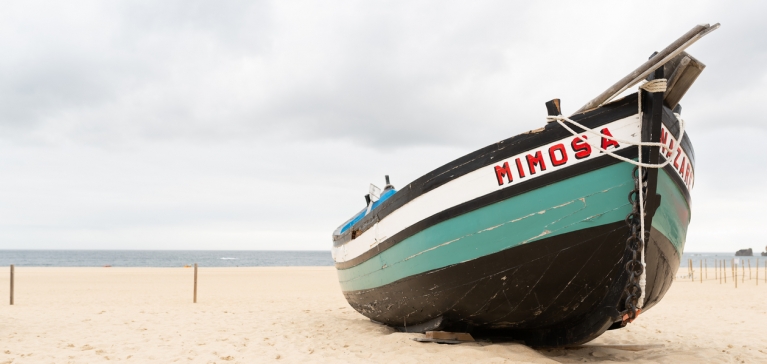
Men launch with these small boats to the cold waters and sail
Women, called “nazarenas”, don’t go to the sea but they have their tasks well-defined. They are waiting for their men on the beach and for their fish. Once the men return from the fishing, the fish auctions begin, and all the diversity is a gift. Here you will find everything, from fish (especially sardines) to crabs or several types of mollusks.
Here the women shine. They are the best selling their fish. And in addition to their cries, they catch your attention with its skirts with seven petticoats - another tradition. There are several legends associated with these women's skirts. One of them says that years ago, when women were waiting on the beach for their husbands to sail home, they’d wear several petticoats to fold layers around their backs and legs.
Furthermore, people also say that they should use seven petticoats, because seven are the virtues, seven are the days of the week, seven are the colors from the rainbow, seven are the waves of the sea, among other legends and myths associated with the number seven.
The tradition also keeps the original structure of the boats. They are colorful, narrow, with curved prows and an evocative decoration of the first fishermen in the region: the Phoenician people.
And if you are lucky, along the beach, you will see the wooden boats, small and very colorful, and the men unloading the catch of the day and watch the old tradition of fishermen, putting their mackerel and sardines on nets pulled tightly around wooden frames and left under the midday sun to dry. One of the symbols of Nazaré.
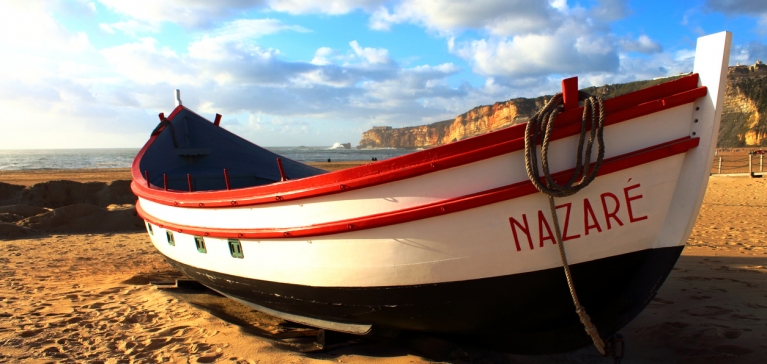
Boats in Nazaré, Portugal
But the tradition is not only at the sea. In every narrow street you will feel that the time has stopped. Through the streets with the smell of the sea, you can witness the family life: laundry flaps in the wind, kids playing soccer, the smell of the traditional meal coming from the small kitchens. Here life is simple. Without an exquisite decoration but amazingly comfortable.
These people are also intricately linked to religion. Indeed, it’s important to pray for a quiet sea: the men have the courage, the women have the faith on their return. And in some days of ill omen, the sand becomes a sanctuary for prayers.
Therefore, we feel religious feelings everywhere. Blessings and processions are quite common in this village. And hidden in a Church of the “Sítio” (a rocky promontory over 100m above the main village), you can find a small black image of Our Lady of Nazaré. According to the legend, it was carved by St. Joseph, the carpenter, and brought to Nazaré in 711.
Visiting Nazaré…
It's amazing to realize that this place, which is located so close to the cosmopolitan cities of Portugal, remains untouchable. Starting from the capital, Lisbon, it’s just two hours’ drive north along the Atlantic coast. And then… you reach Nazaré!
Besides the stupendous landscapes that you can see during the trip, you will also discover a gorgeous place that is worth knowing. Here you will meet the old Portugal: the hard and risky work of people who should be grateful (and be upset) with this furious sea.
Therefore, a visit to Nazaré is mandatory! And if you want to appreciate the most wonderful feelings that Nazaré has to offer, join a tour through this village and simply... enjoy!
Other Articles
